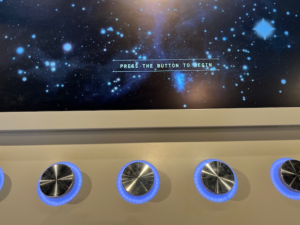
STS.S21 Museum Science: What’s New, What’s Different, What Works?
IAP 2024: Monday, January 22, 2024 – Friday, February 2, 2024, inclusive
*Interested students should reach out to Prof. Durant via email at jdurant@mit.edu.*
For credit (3 units)
Instructor: Prof. John Durant
Meeting times: 10:00am – 3:00pm
MEETING ROOM: E28-330 (MIT Museum)
The class will meet for 3 days (22-24 January inclusive) to prepare for fieldwork; fieldwork will be conducted over the middle period (Thu 25 January – Tue 30 January); and the class will meet again for the final 3 days and presentations, comparisons and conclusions (Wed 31 Jan – Fri 2 February). Student teams may select which days they elect to undertake their fieldwork, but it is anticipated that each team will spend at least 1 weekend day (Saturday, or Sunday) in the field.
Outline:
Museum science is ever-changing. We will dive in with a comparative assessment of 4 science museums in the Greater Boston area: the Boston Museum of Science; the Harvard Museum of Natural History; the Paul S. Russell, MD Museum of Medical History and Innovation; and the MIT Museum. Starting with preparatory sessions in the classroom, we will divide into 4 small teams (2-3 people per team) for fieldwork. Each team will visit 2 of the 4 chosen sites. In their primary site, teams will conduct in-depth on-the-ground reviews, including at least one interview with a key staff member, in order to discover: mission, audience, method(s) of interpretation, etc. In their secondary site, teams will make a brief, half-day visit to a different museum for purposes of comparison. Back in the classroom, each team will present its findings on its primary site to the entire class. We will conclude with a comparative assessment of the strengths & weaknesses of the 4 museums.
Class comprises 6 days in the classroom = 30 hours; plus 12 hours of field visits + private/group study = a total of 42 hours.